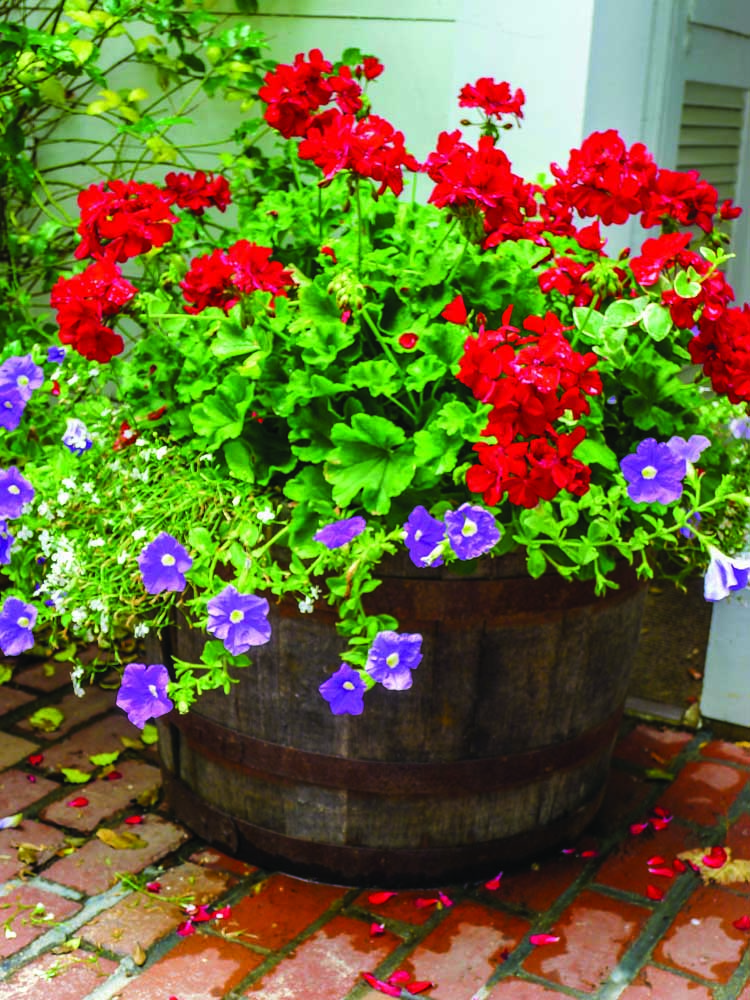Central Oregon Gardening Calendar
Published 12:00 am Saturday, June 9, 2018

- Central Oregon Gardening Calendar
June
• Protect young vegetables from frost by having row cover (frost cloth) on hand. Place over crops when needed.
• Water vegetable and flower gardens early in the morning and fertilize as needed. Consistent moisture will help improve the quality of the harvest.
• Plant flowers to attract pollinators to the garden(e.g. native plants or flowers that are blue, yellow, red or violet).
• Water the lawn between 4 inches to 6 inches per month, approximately 1.5 inches per week.
• Manage weeds while they are small and actively growing with light cultivation or herbicides. Once the weed has gone to bud, herbicides are less effective.
• Most lawns in Central Oregon are composed of Kentucky bluegrass, fine fescues, and perennial ryegrass and prefer a mowing height of 1.5 inches to 2.5 inches for optimal turfgrass health. It should be mowed between four to six times per month during June and July.
• Container gardening is a great way to grow annuals for the season. Get started on containers using clean potting soil and annuals such as sweet potato vine, petunias, or snapdragons.
• Lawns can be fertilized late June through early July at an application rate of 1 pound nitrogen per 1,000 square feet using soluble or mixed soluble—slow release nitrogen fertilizers. Optimum ratios for N-P-K materials range from 3-1-2 to 6-1-4. Another option is to use straight nitrogen materials such as ammonium sulfate or complete fertilizers containing N-P-K.
• Installing a new lawn? Consider using turf type tall fescue which is a more drought tolerant and low maintenance lawn for Central Oregon.
• Aerating the lawn followed by an application of fine compost on top of the lawn (quarter inch) will help reduce water use. Aeration will relieve compaction, remove some thatch and the additional compost will feed the soil and improve the water holding capacity of the lawn.
July
• When trying to conserve water in the landscape, prioritize watering trees first, followed by shrubs, perennials and turf. The latter three are less expensive if needing to be replaced.
• Another way to reduce water use in the landscape is by using mulching materials around landscape plants to help conserve moisture.
• Pinch back annuals to keep them full of blooms.
• Plant flowers that attract beneficial insects including catmint, coreopsis, coneflowers and penstemons.
• Native plants will attract native beneficial insects and pollinators.
• Plant trees, shrubs, perennials, and annuals anytime during the growing season.
• Deep water trees, shrubs and perennials every five to seven days.
• Protect berry crops from birds with bird netting.
• Stake tomatoes, delphinium, hollyhocks, lupine and other tall plants.
• Protect vegetable gardens from flying insects using row cover.
• Plant seed beans, and harvest broccoli, peas, lettuce and radishes.
• Keep potatoes and tomatoes consistently moist by watering thoroughly; this will produce better quality crops.
• Time to harvest beets, broccoli, carrots, kohlrabi, leeks.
August
• Be sure and give turf and landscape plants additional water if needed during the hottest days of summer.
• Spider mites prefer Central Oregon’s hot and dry environment, especially the weather during the month of August, and they target specific ornamental shrubs and perennials such as arborvitae and holly hocks. These tiny insects can be controlled by jet spraying more resilient plants with water from the garden hose. This blast of water will kill the spider mite on contact or knock it off the plant to prevent further feeding damage. For larger infestations on more tender plants, a miticide may be necessary.
• Check leafy vegetables for caterpillars. Control with Bacillus thuringiensis (Bt).
• Avoid fertilizing the lawn during this month. The hotter temperatures are more stressful for turfgrass and it’s not good to encourage excessive growth.
• Continue to water the lawn 4-6 inches per month as needed.
• Plant garlic and cold season crops.
• Harvest potatoes when the tops die down. Store them in a cool, dark location until use.
• Fertilize cucumbers, summer squash, and broccoli, while harvesting to maintain production.
• Harvest raspberries and ever-bearing strawberries.
• Clean up the leaves and fertilize strawberry beds.
• Prune away excess vegetation and selectively remove new blossoms on tomatoes; this will improve the quality and flavor of your existing tomatoes.






